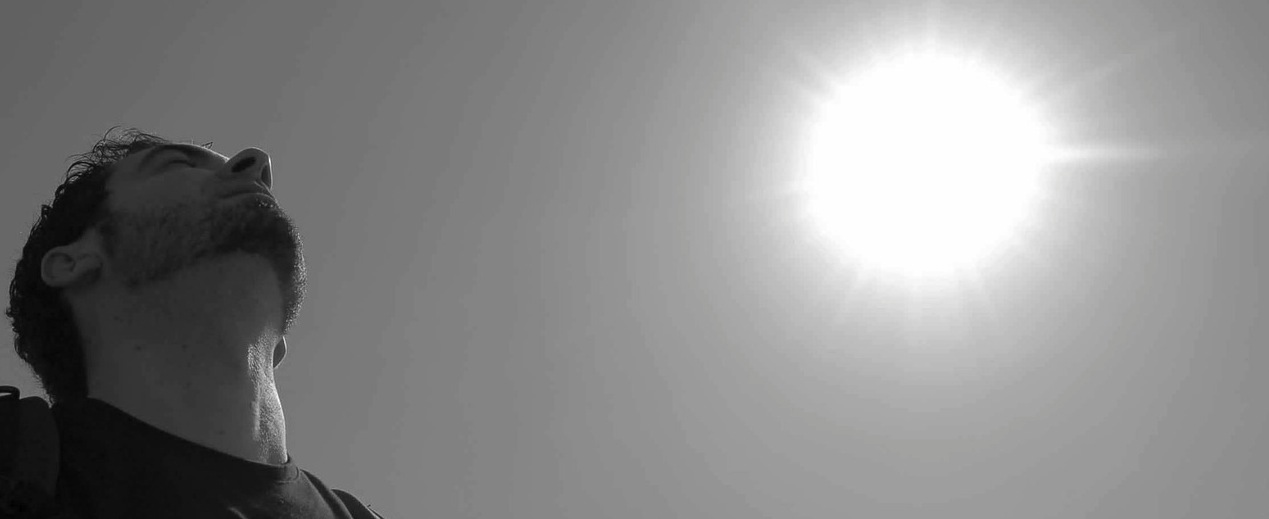
Think About It
Breathing is something we do unconsciously and really never give any thought to intentionally controlling its process. But as a voice talent, you will need to take control of your breathing if you have any intentions of getting through a script. The tonal quality, the sound, the volume, the pitch, the energy of your voice are all reliant on how you exhale. Breathing exercises for voice might take a little training and practice, but you’ll go a long way and score big with your clients.
How’s Your Standing or Sitting Posture?
Sitting down compresses the abdomen and restricts the movement needed for proper breathing while you try to articulate through a script.
Some people like to sit down while doing voice work, and if you have a physical issue with standing for long periods of time, that is certainly what you need to do. If that is the case, you can practice some breathing exercises in a high-backed chair.
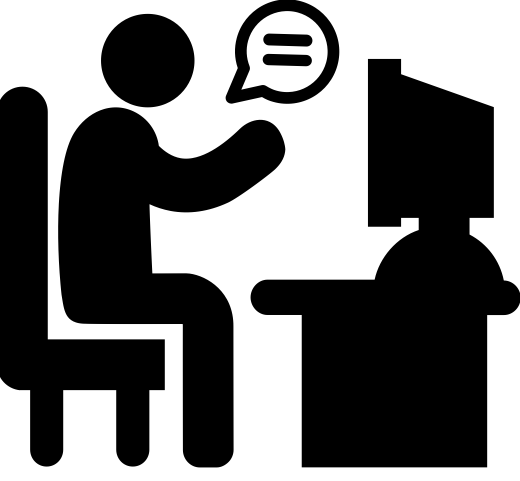
Try to be aware of keeping your shoulder blades touching the back of the chair to maintain posture. Notice when they come away from the chair if you begin to slouch.
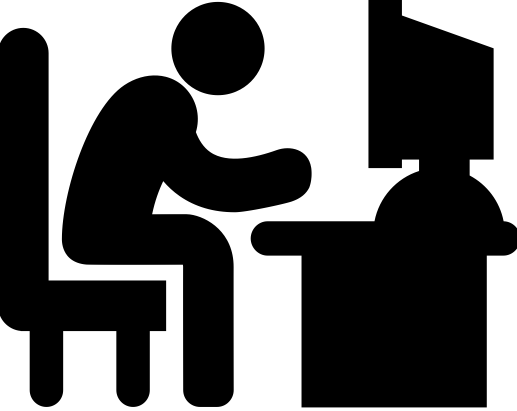
If you don’t need to sit, standing with good posture opens up you chest cavity and allows for better movement of your diaphragm and the surrounding muscles that support control over your breath.
When doing voice work or working with a talent, I like to position a microphone for a standing position slightly higher than the mouth, usually about eye level at a slight downward angle. I will do the same for a seated talent, but I always advise standing if you can.
This unconsciously forces you to keep your posture. When you start to loose you posture your head drops and may even move forward. This will get you off-mic and there is a noticeable difference in quality that might not be evident if the mic is positioned lower and/or angled up.
Breathing Exercises
Chest Expansion vs. Abdominal Expansion
Very simple breathing exercises involve lying down on your back and just being aware of your breath as it moves in and out. This is when your midsection is extended to its fullest.
There is no easy way of slouching when you are on your back. You actually would have to try with great effort to make that happen. But slouching can come very easily when sitting without us even realizing it. Then shallow breathing starts to set in.
When lying on your back, it is much easier to realize which parts of your body move naturally when breathing correctly. Many people expand their chest when they breathe, but it is really your abdomen that expands when a breath is taken properly.
Your chest should not move and your shoulders should not rise. This will only create tension in the shoulders and the neck and jaw.
There is no need to use a book or anything else other than your hands to compare abdominal and chest movement. You will only be putting unnecessary pressure on a muscle that should be moving freely. Never put a book on your stomach or chest for this exercise.
Your diaphragm is an involuntary muscle, much like your heart in that you do not purposely control its function. It would be a real pain to have to think about every single breath all day.
You would never be able to think about anything else for very long. When you do think about your breathing, that’s when the natural rhythm gets thrown off.
The diaphragm expands into the lower abdomen, creating a void or a vacuum that draws air into the lungs, without any effort from you. Then the reverse happens and the air is pushed out of your lungs.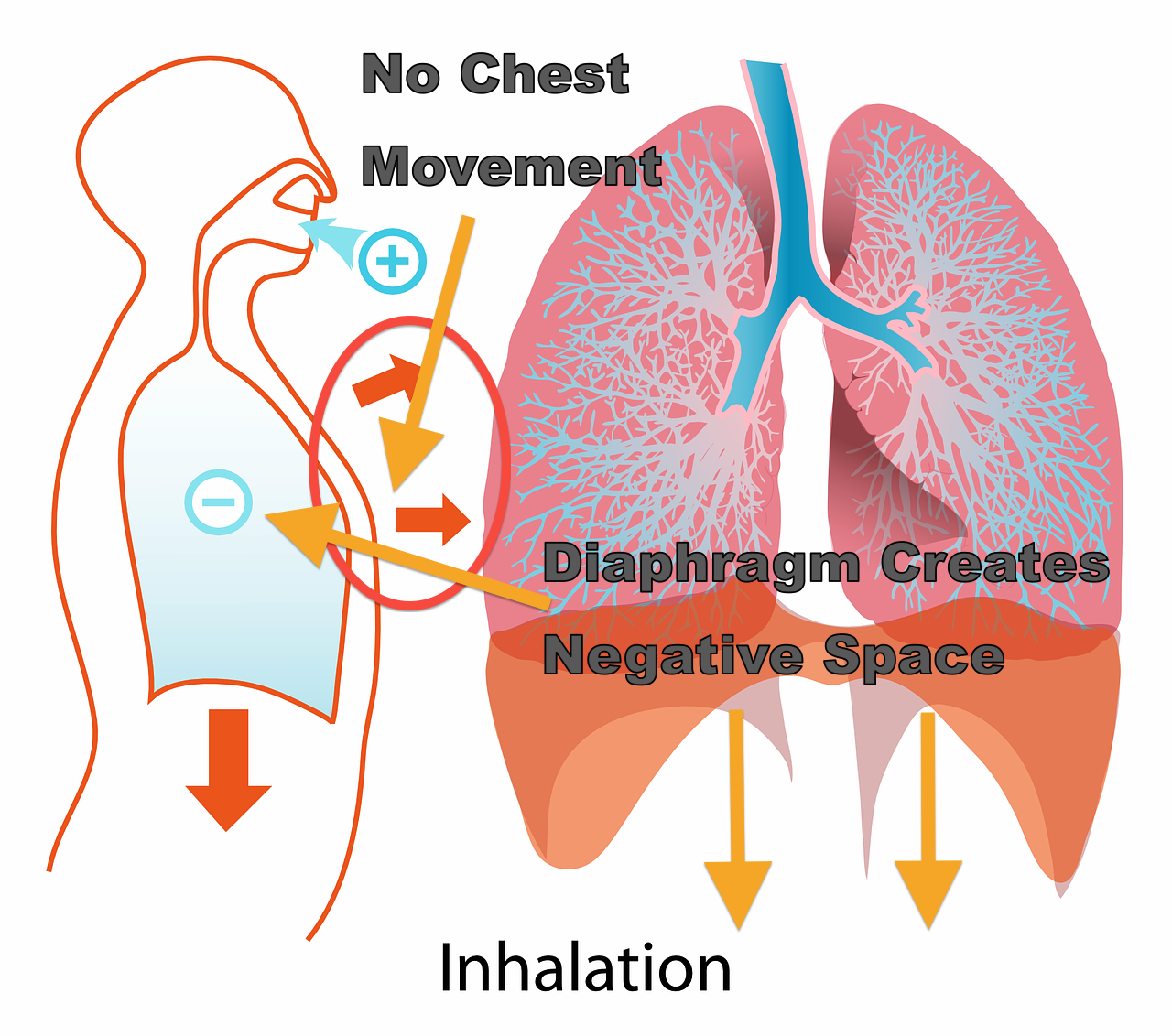
It is normal for the abdomen to expand when taking in air, and this should be happening naturally.
But when it comes to speaking or singing or voice work, we have to think about when to use our breath to our advantage.
When To Take A Breath
Punctuation not only gives us a clue as to how the phrasing of a sentence should be, but it also gives us very useful places to breathe. We can use our peripheral vision to recognize when a new sentence is on the horizon by its first word being capitalized.
We should also be using other types of punctuation such as commas, colons and semi-colons, periods, dashes, exclamation points and the like as an ideal place to take a breath. If you feel you have taken plenty of breath to reach the end of the sentence, you want to simply pause during a comma without letting any air escape, then continue on.
We may not even realize it, but because of the many years of reading since we were children, our eyes are conditioned to recognize subtle variations in spacing in the written word. We are used to seeing a single space between words and the way certain kinds of punctuation alter that delicate spacing.
For instance:
Take a look at the paragraph above and notice where there are commas and where there are periods. These are small punctuation characters that only take up the very bottom portion of the sentence line. On the other hand, letters can take up half and in some cases (no pun intended) all of the line height.
Our eyes see not only the small space between words but the seemingly additional space where small punctuation is present. So our eyes perceive two character spaces instead of one.
Add to that the addition of an upper case letter after a period to tell us even more about how to raise or lower our inflections to translate what our eyes are sensing into an audio representation.
The brain is incredibly quick at interpreting these subtle changes that the eye catches. Now that I have pointed this out to you, do you think it is possible for you to be more aware of your peripheral vision to improve your performance?
One Of My Pet Peeves For Pick-Ups
I know it is frustrating when you are cruising right along and you stumble over a word or phrase. Many times we tend to rush right in and try to fix it. So we start the sentence again only to be unsure of how to proceed, and then stop three words later and quickly start the sentence again on the same original breath.
Don’t do that!
Don’t be in a rush to do that sentence over while you try to make up time. Sometimes we need to just stop the clock in our heads and reset.
And please don’t do “three in a row” of anything on the same breath, either.
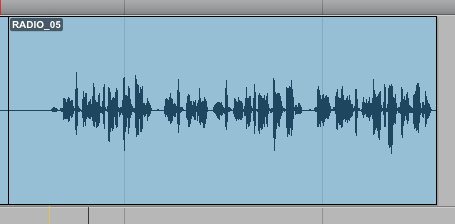
Listen to the audio of these three takes and notice the shallow breath for #2 and #3 as well as the false starts where there is no new breath.
Give yourself the proper time to take a good, thoughtful breath and give that sentence what it deserves. For those “three in a row” takes, give each of those three the same kind of breath you gave the first one, not the same breath.
Read my post about Voice Over Practice Exercises Anyone Can Do and see why this is important and how it will make you stand out among your peers.
How Stress Affects Your Breathing
Days can get pretty hectic when you’re waiting for a script to come in and maybe getting behind. Stress from traffic on the way to a session can get us tense before we even arrive at the studio.
It can also be incredibly frustrating if you are trying to work from home and dealing with equipment issues, especially if you didn’t leave yourself extra time for problems like that.
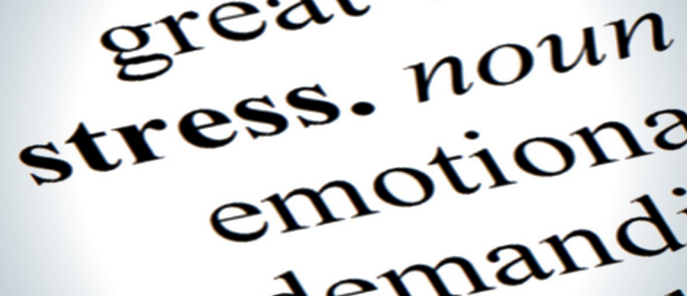
Many other issues of daily life can start to build up and we don’t see how shallow our breathing gets, or how we are unconsciously holding our breath. It then becomes very difficult to take control of it when we are not even breathing naturally because of the way our day is turning out, to begin with.
One of the benefits of breathing exercises is that they will not only help us realize how tense we can be but they also naturally relax us and put us in a better, more open state of mind.
If you find yourself under pressure, utilizing these techniques regularly will condition you to be able to relax quickly in just a few minutes time before a session.
Sing For Longevity
Singing is a great way to increase your lung capacity and expand your vocal range.
These breathing exercises are practiced by many singers in order to increase their ability to sustain notes as well as get through long vocal passages.
There is a study being done at the University of California San Francisco that hopes to prove that singers live longer, healthier lives.
I would argue that the reason is due to their increased lung capacity allowing them to intake more oxygen on a regular basis than the average person. The study also finds that singers in groups such as quartet and choral groups can become in such harmony with each other that their heart rates begin to synchronize.
Singers are also able to maintain a strong core which may help to extend life in later years. The breathing exercises we are talking about play a significant role in strengthening the core muscles to provide breath support.
Strengthening Your Diaphragm
Don’t Do This
It is often wrongly suggested to inhale quickly and then exhale quickly and with force either completely or in spurts as a means of strengthening your core muscles to give the diaphragm more support.
I don’t agree with this method because it does not build stamina for longer exhalations, which is what we are looking for in terms of script reading. It can also cause you to become light-headed.
You want to be striving to get more words out of a single breath. You will never be in a situation where you need to expel all your air at once for voice work. And you should never expel air in that manner during speech because you risk damaging your voice. That would certainly be the last thing you want.
Do This Instead
Practice inhaling quickly and exhaling in a long steady stream. Let the air out consistently and smoothly, maintaining an even flow of air for as long as you can until nearly empty, not completely empty.
This will help to strengthen the muscles around your diaphragm so that you have more control over temporarily altering its natural, involuntary movement.
Remember, you cannot control this movement for any longer than it takes you to expel the air from your lungs.
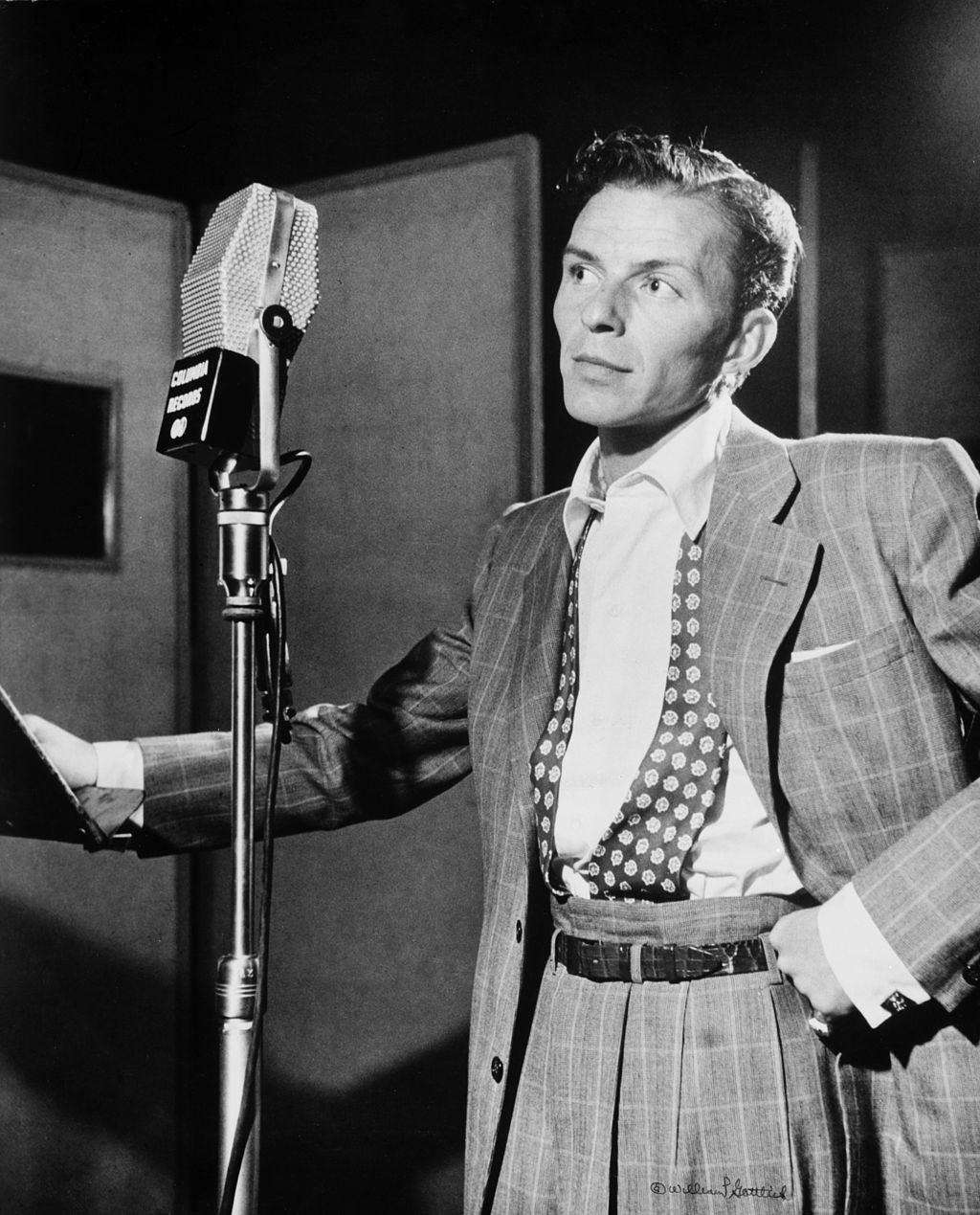
Frank Sinatra reportedly would mentally sing his songs while swimming under water to see how many verses he could get through before needing to take another breath. This allowed him to tie his words, sentences, and verses together to create a smooth vocal performance with fewer breaths than most other singers were capable of.
When you’re on the job, you need to release your air precisely to create the sound you want.
The longer you can extend and control the time it takes to release your air, the more control you will have over every word that comes out of your mouth.
That is what you ultimately want your exercises to do for you as a voice talent.
This will also get you through longer sentences while still maintaining a small amount of reserve.
You don’t want to get into the habit of speaking using the very last remnants of your air and then gasping for the next breath. We all know what it sounds like to be out of breath and then try to force those last couple of words out.
I see too many newcomers reading until they are completely tapped out and not even realizing what they sound like.
Reserving a small amount of air at all times will help you to maintain more control over your performance. Remember; exhalation, and having the air to be able to exhale in a precise, controlled fashion, is what creates tonal quality, volume, pitch…everything that we are proud to be able to do and what makes us talent to begin with.
As you work with this exercise, create a hissing sound or some other tone or note during exhalation and keep it constant in volume and pitch from start to finish.
You may also want to intentionally alter the volume and pitch under control as an additional variation. For example, this would involve slowly or quickly ramping the volume and/or pitch up about half way, or anywhere you choose, and holding it there for a few seconds.
Then continue up or go back down for the duration of the breath. This exercise will help you develop better control of the muscles surrounding the diaphragm.
Letting the air out of a balloon is a great example of the control that you can have while using this technique. You can let it all out at once, (which we do not recommend for an exercise) or you can alter how much air comes out.
In other words, CONTROL how much air comes out and notice how it changes the pitch and the sound.
Practice These Breathing Exercises In Sets
Until you pass out – no, no, no, just kidding!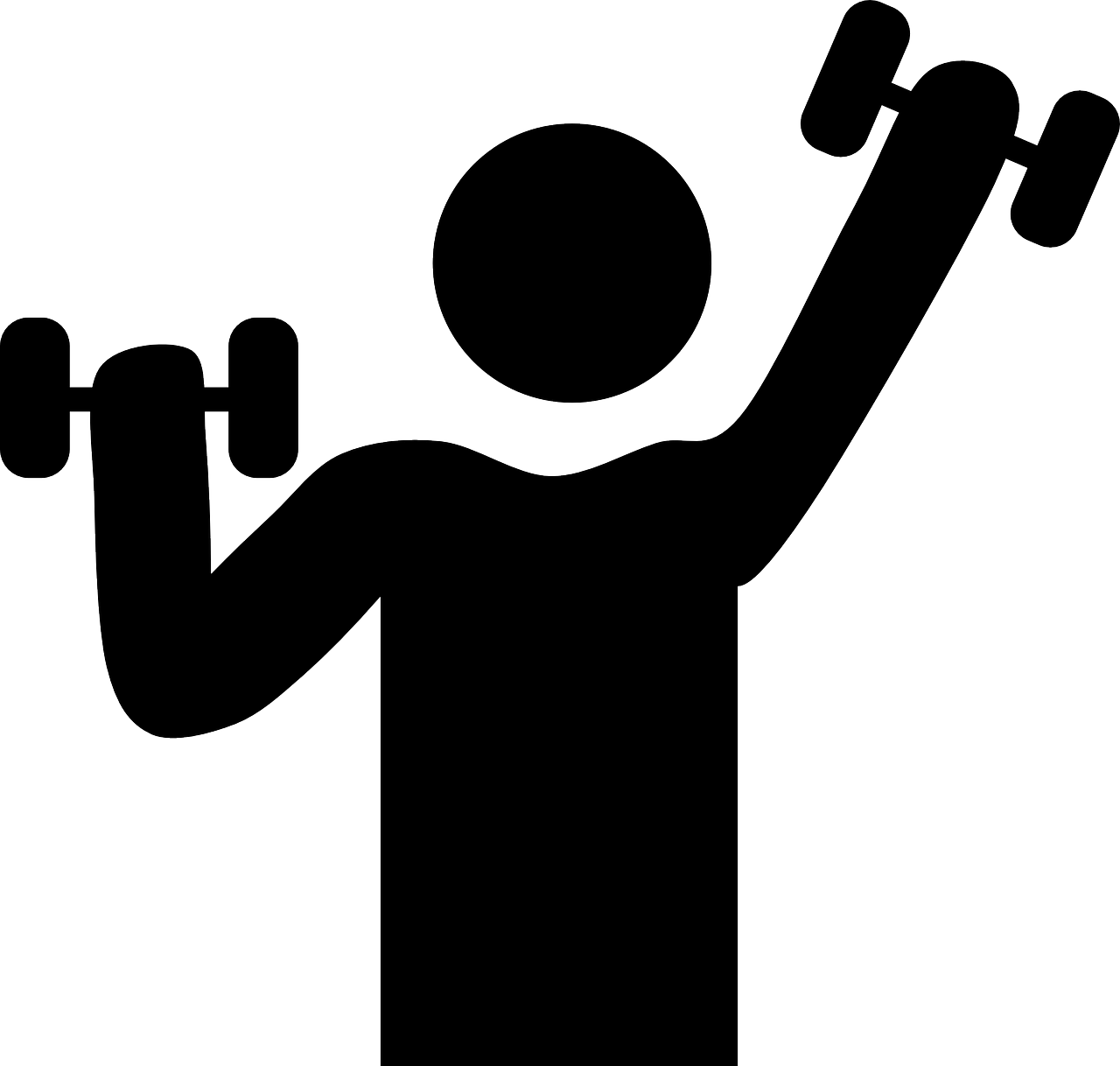
But really, doing any kind of exercise multiple times in a row conditions your body to become familiar with them so that you can perform the same way in a moments notice when you need to, and not just when you are exercising.
You will find that with regular practice, your lung capacity will increase and taking large, quick breaths will become easier and easier for you.
As your lung capacity increases, it will also result in a natural increase in your ability to produce more volume and tonal control without having to force it to happen, giving you better control for scripts that may require a hard sell performance. That will also help reduce neck and chest muscle tightness.
You should get accustomed to taking in the amount of air necessary for the sentence before you.
Taking in more air than you need will force you to exhale at the end of the phrase in order to quickly get rid of the extra air before you inhale for the next phrase.
Use most of your air to say what needs to be said before punctuation guides you to take more breath. If you take in air for a sentence with 10 words, use nearly all of that air for those 10 words. Reserving just enough so that there is no perception of you being out of breath.
Taking in too much will force you to expel excess air before you take your next breath. That is completely unnatural and a HUGE time waster. Thirty seconds goes by quick.
Incidentally, I find that it makes more sense to do all breathing exercises for voice work through your mouth and not your nose. You cannot get the large capacity of air needed for voice work in through your nose that you can with your mouth, and of course, all exhalation for voice work will be done through the mouth as we speak.
You also need to close your mouth to breathe through the nose and this could add unnecessary time to your performance as a voice artist. Breathing through your nose even while keeping your mouth open requires your throat to close, tightening your vocal cords.
Try it:
Take a few breaths through your mouth and then, while keeping your mouth open, switch to breathing through your nose. You will feel the back of your tongue close the gap at the back of your throat and your vocal cords tighten. Switching back and forth with your mouth open also create an audible click that would take a lot of editing to clean up over the course of an entire read.
You can also take quieter breaths this way as opposed to trying to draw air through the smaller passageways of your nose, which will create more noise.
Conclusion
Breathing exercises may not be what most people think of doing. But as a voice talent, it should be an integral part of your training to advance your career.
You’ll be able to extend the time it takes to release your air, allowing you to get further into a script before taking a breath.
You will increase your lung capacity, giving you much more control over your volume, tone, pitch and overall quality of your voice.
It will make your work so much easier to do.
You will feel less stress in general and when you do feel stressed, you will have a useful technique to quickly bring you back to a calmer state.
And best of all, it may actually help you to live longer. That alone makes this a pretty good career choice, if you ask me.
What breathing tips have you used that you can share with your fellow readers? Leave us a comment below.
If you liked this article, please share it with your friends!

I am still trying to improve my breathing and this post has excellent information. I am still having to edit out breaths and have not got it completely under control. If anyone has any other sources of good breathing techniques for Voice Over work it would be appreciated!
Hi Craig,
Thanks for your feedback. You may always have to do SOME editing on your breath. That’s just the nature of the recording process, but techniques to keep the editing to a minimum will go a long way in improving your work. It is too unnatural for there to be no breath at all in a recording as it actually makes the listener HOLD their breath. Having an appropriate space and a perception of breath does the trick.
I listened to your demos and can’t wait for the commercial demos to be available.
Thank you for the great breathing advice and breathing exercise explanations! I am currently a VO student so adding a breathing regiment to my day will be perfect. Thank you
As a VO student, practicing breathing exercises are critical. Learn to control your breath early on in your training and you will have one of the easiest paying jobs you can think of. Every word must be under complete control and learning proper breathing is a huge step to accomplishing that.
Well at least now we know why I sound horse, thanks for outlining the importance of breathing, I actually had no clue. GOOD STUFF!
The right breathing techniques are very important, and you can certainly get yourself hoarse by pushing too hard because of lack of air.
Take good, quick breaths and only use 85-90% of it to say or sing only what you can comfortably for that amount of air.
Wow! thank you for this section on breathing.
I am the worst at not breathing and I do exactly as your illustrated talent does. I get in a hurry and forget to just stop… and breath.
I appreciate the explanation of how the diaphragm works because even though I knew it, I simply forgot how important it is.
Love this site and would recommend VoiceAtHome to anyone who wants to do, or is working in voiceovers.
Keep it up.
Thanks, Steve!
I think breath is one of the biggest battles talent face. Everything depends on your ability take in air quickly and push it out precisely and with complete control.
And thanks for your recommendations!